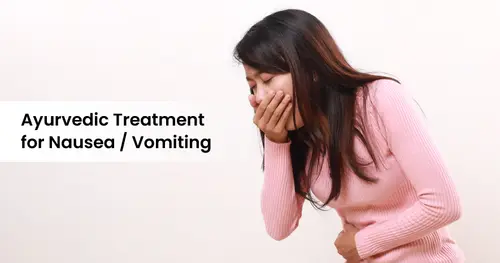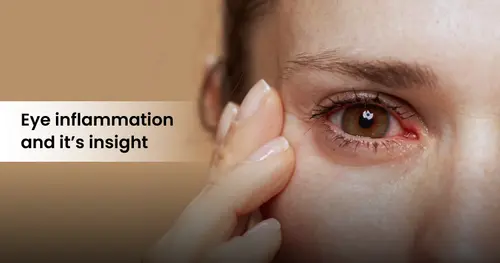
Urticaria, more commonly known as hives, is a prevalent dermatological condition that manifests as raised, erythematous (reddish), and intensely pruritic (itchy) wheals on the skin. These eruptions may occur suddenly and can resolve within hours or persist for weeks, often recurring in unpredictable patterns. The intensity of symptoms can vary from transient mild discomfort to severe systemic manifestations, including angioedema and life-threatening anaphylaxis when the condition involves the respiratory tract.
From an Ayurvedic perspective, this condition corresponds closely with Sheetapitta, a pathology described in classical texts such as the Charaka Samhita and Ashtanga Hridaya. Sheetapitta arises from the vitiation of Vata and Pitta doshas, often with the involvement of Kapha, affecting the Rasa and Rakta Dhatus. The disturbance in these fundamental bioenergies and tissue elements leads to obstruction in the microchannels or Srotas, which culminates in clinical features such as Kandu (itching), Toda (pricking pain), and Vidaha (burning sensation).
While contemporary medicine attributes urticaria to the degranulation of mast cells and histamine release in response to allergens, infections, or stressors, Ayurveda provides a broader lens. It focuses not only on the external trigger but also on the individual’s internal milieu—the Agni (digestive fire), Ama (metabolic toxins), and Ojas (vital immunity)—which determine the body’s tolerance and response to stimuli.
Classification of Urticaria:
Clinically, urticaria is categorized into three main forms:
Acute urticaria is typically of allergic origin and lasts for a few days to a few weeks. It may be triggered by certain foods (such as shellfish, milk, or nuts), medications (like antibiotics or NSAIDs), insect stings, or infections.
Chronic urticaria persists beyond six weeks and may be idiopathic or linked with autoimmune conditions such as systemic lupus erythematosus.
Physical urticaria is a subtype precipitated by external stimuli such as temperature extremes, sunlight, pressure, or exercise. The eruptions are usually self-limiting and subside once the stimulus is removed.
Etiological Correlation: From Ahara to Agantuja Nidana
In Ayurveda, the causative factors—or Nidanas—for Sheetapitta include Ahita Ahara (improper food), Viruddhahara (incompatible food combinations), and Dushivisha (low-grade internal toxins). The ingestion of spicy, sour, or excessively heating foods disrupts Pitta dosha, while erratic routines and improper sleep (such as divaswapna—daytime sleep) imbalance Vata. These disturbances culminate in a systemic reaction, akin to allergic hypersensitivity.
Triggers such as exposure to detergents, pollen, dust, animal dander, sweat, extreme temperatures, and certain medications—can be interpreted in Ayurveda as Agantuja Hetus or external provocateurs. These factors disturb the equilibrium of doshas, particularly Pitta and Vata, and when combined with a weakened digestive fire, lead to the accumulation of Ama and the manifestation of urticarial lesions.
Clinical Features and Diagnostic Considerations
The hallmark of urticaria is the appearance of transient wheals or plaques that may be pale or red, with irregular borders. These lesions are typically associated with intense itching, burning, or a pricking sensation. They may migrate across different parts of the body and can coalesce into larger plaques. Blanching is common, and in cases where deeper tissues are involved, localized swelling or angioedema may occur. In severe forms, particularly when the airway is involved, there can be life-threatening laryngeal edema and respiratory distress requiring emergency intervention.
Diagnostic modalities in modern medicine include allergen skin tests (such as skin prick or scratch testing), blood investigations (including CBC, ESR, IgE levels, CRP), and occasionally skin biopsy in chronic or atypical cases. These assessments help identify underlying triggers and immune mechanisms.

Ayurvedic Management Strategies for Urticaria:
Ayurveda advocates for a personalized, multi-dimensional approach in managing urticaria, beginning with Nidana Parivarjana, or the elimination of causative factors. This fundamental step involves correcting dietary and behavioral errors and adhering to Dinacharya (daily routines) and Ritucharya (seasonal regimens) to stabilize internal balance and minimize doshic aggravation.
The main therapeutic pillars in Ayurveda for treating Sheetapitta include Shodhana Chikitsa (purificatory therapies), Shamana Chikitsa (palliative treatments), and Rasayana (rejuvenation), tailored to individual constitution and disease stage.
Shodhana Chikitsa initiates with Ama Pachana—the digestion of toxins—using deepana (digestive stimulants) and pachana (carminatives). Once digestion is stabilized, Snehana (oleation) is performed using medicated ghee or oils both internally and externally, followed by Swedana (sudation or fomentation) to liquefy the aggravated doshas. This is succeeded by Vamana (therapeutic emesis) to expel Kapha, Virechana (purgation) to eliminate Pitta, and Basti (medicated enemas) to correct Vata. These procedures purify the blood, regulate immune responses, and enhance tissue nourishment.
Shamana Chikitsa involves internal administration of herbal formulations. Classical preparations such as Tikta Kashayas (e.g., Mahatiktaka, Tikta-Kashayam) reduce inflammatory responses, Manjishtadi Kashayam aids in blood purification, and Indukanta Kashayam helps restore immunity and digestive balance.
Ghee preparations like Mahatiktaka Ghritham and Indukanta Ghritham soothe Pitta and act as Rasayana for skin and Rasa-Rakta Dhatus. Choorna (herbal powders) such as Haridrakhandam, Avipathi Choornam, and Triphala are often administered for their antihistaminic, anti-inflammatory, and detoxifying properties. Classical herbo-mineral formulations like Sootashekara Rasa, Arogyavardhini Vati, and Aragwadadi Vati support systemic balance and skin healing.
Nutritional regimens in Ayurveda focus on minimizing Pitta-provoking and allergenic foods. A wholesome, easily digestible diet consisting of old rice (Purana Shali), green gram (Mudga), and gourd vegetables (like Patola) is preferred. Warm water, herbal decoctions, and avoidance of curd, fish, fermented foods, and incompatible combinations (e.g., milk with sour fruits) are strongly advised.
Daily oil massage with cooling oils, such as neem oil or coconut oil, followed by a warm bath helps in maintaining skin integrity and calming aggravated Vata. Practices like Yoga and Pranayama, especially Anuloma-Viloma, aid in balancing autonomic responses, reducing stress-induced triggers.
Stress management and avoidance of known allergens—such as dust, synthetic fabrics, or detergent exposure—form a crucial aspect of lifestyle regulation. Home remedies like the topical application of turmeric and neem leaf paste may offer symptomatic relief in mild cases, while chronic or severe cases necessitate structured medical attention.
Urticaria, though often viewed as a superficial skin disorder, reflects deeper systemic imbalances involving immunity, digestion, and emotional health. Ayurveda approaches this condition not merely as a dermatological complaint but as a reflection of Dosha-Dhatu imbalance, requiring a concerted effort to restore harmony at both the internal and external levels.
FAQ
1. What are the common causes of urticaria in Ayurveda?
Ayurveda attributes urticaria to factors like:
- Improper diet (Ahita Ahara)
- Incompatible food combinations (Viruddhahara)
- Ama accumulation (metabolic toxins)
- External triggers such as pollen, dust, temperature changes, and synthetic clothing (Agantuja Hetus)
2. How does Ayurveda classify urticaria?
Urticaria is classified as:
- Acute Urticaria: Sudden onset, short duration
- Chronic Urticaria: Persists for more than six weeks, may be autoimmune
- Physical Urticaria: Triggered by external stimuli like sunlight, heat, or pressure
3. What are the typical symptoms of Sheetapitta (urticaria)?
- Raised, red, itchy wheals or plaques
- Burning or pricking sensations
- Swelling (angioedema) in severe cases
- Migrating skin eruptions that may merge
- In serious cases, respiratory distress due to airway involvement
4. How is urticaria diagnosed and assessed in Ayurveda?
Ayurvedic diagnosis is based on:
- Dosha imbalance assessment
- Evaluation of Agni (digestive fire) and Ama (toxins)
- Patient’s diet, lifestyle, and stress levels
- Modern tests like skin prick tests and blood reports (IgE, CBC) may support the diagnosis.
5. Which Ayurvedic medicines are commonly used for urticaria?
- Mahatiktaka Kashayam, Indukanta Kashayam
- Haridrakhandam, Avipathi Choornam, Triphala
- Mahatiktaka Ghritam, Indukanta Ghritam
- Classical formulations like Sootashekara Rasa, Arogyavardhini Vati, Aragwadadi Vati
6. Can stress cause or worsen urticaria?
Yes. Emotional stress is a significant trigger, especially in chronic urticaria. Ayurveda addresses this with Pranayama, meditation, and adaptogenic herbs to balance the mind-body connection.

November 26, 2025

November 13, 2025

November 09, 2025

October 27, 2025

October 24, 2025

October 18, 2025
We use cookies that are necessary for the smooth operation of the website, to improve our website and to display advertising relevant to you on social media platforms and partner websites. By clicking "Accept all", you agree to the use of cookies for convenience features and statistics and tracking. You can change these settings again at any time. If you do not agree, we will limit ourselves to technically necessary cookies. For more information, please see our privacy policy .